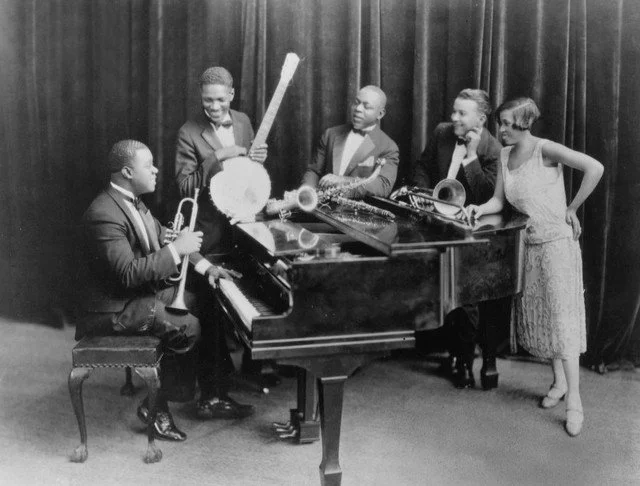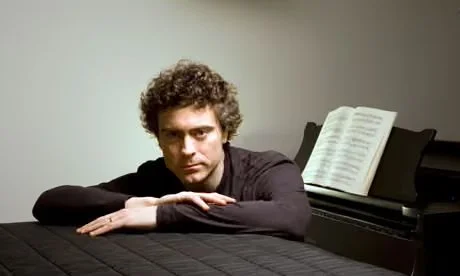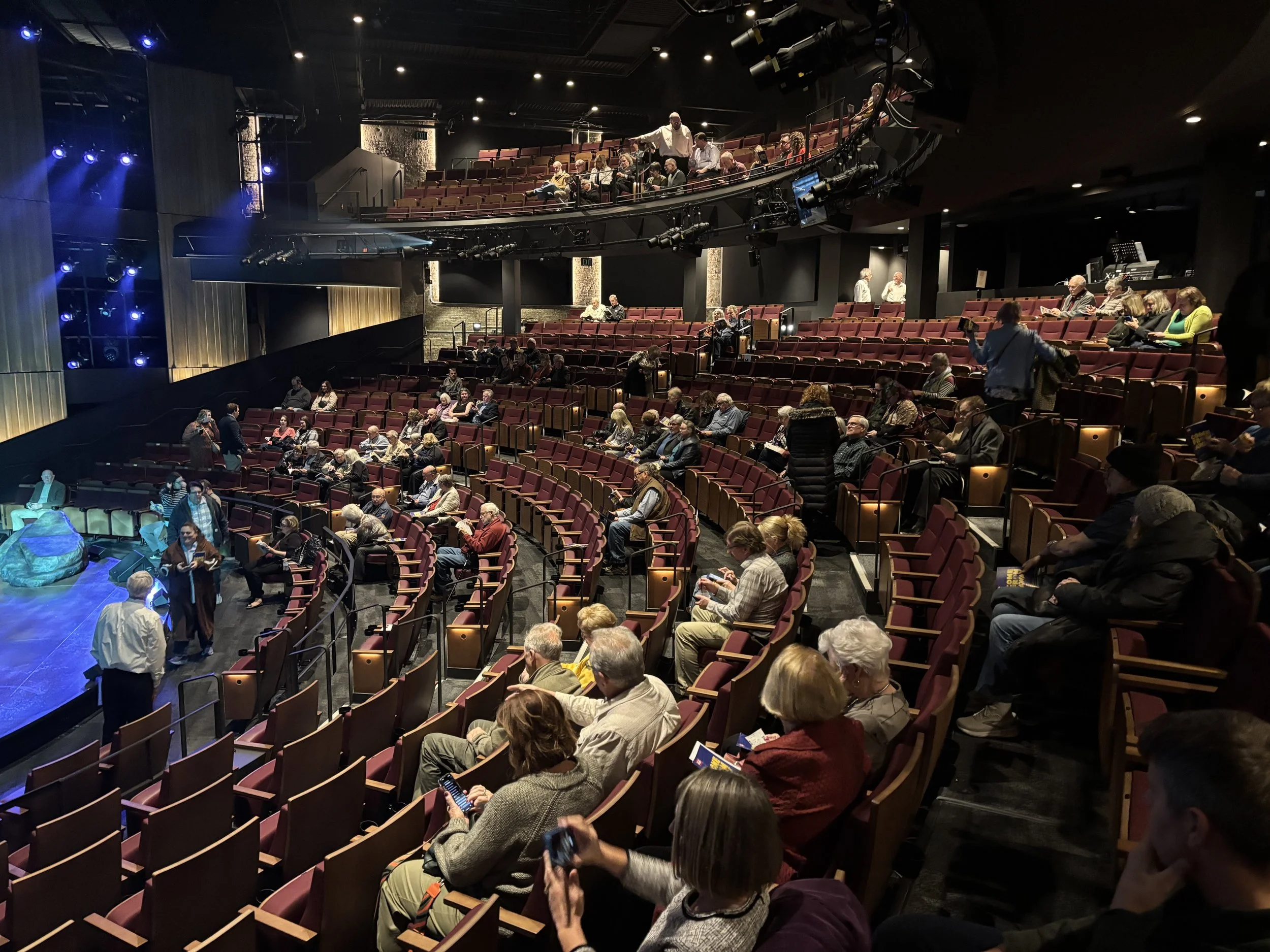Joy for the World
The holidays are upon us, which means—if you’re paying attention to our Amazon Overlords—the winter hills will soon be overtaken by octogenarians gliding o’er the snow. If you’re feeling the spirit—and in search of a celebration that’s more likely to be approved by your orthopedist—might I suggest a different source of good feeling.
One hundred years ago, Louis Armstrong and friends went into the Okeh record studios in Chicago and committed to wax some of the music he’d been playing in New Orleans and up along the Mississippi river. The so called “Hot Five” and “Hot Seven” recordings have been jingling people’s bells ever since.
So when the next wave of holiday humdrums strike, try turning to Louis and company for some deep and giddy joy. For starters, strike up the iPod and play “Who’sit.” If you’re watching some crazed Best-Buy, Black-Friday stampede on the local news, all the better. Turn the TV volume down and chuckle at the retail chaos as Kid Ory slips and slides through his trombone solo. (click on the photo to hear it now.)
True Colors
Call it cosmic serendipity. A few days after solar storms brought dazzling colors southward into Wisconsin skies, the Milwaukee Symphony Orchestra featured a program from Scandinavia (the usual home of the aurora borealis) that positively lit up Allen-Bradley Hall.
Even before the music began the mood was set by conductor Rune Bergmann, large and ebullient, who bounded onto the stage to conduct Cantus Articus, a rarely heard "concerto for birds and orchestra" by Finnish composer Einojuhani Rautavaara. And sure enough, after a minute of a gentle flute duet, recordings of birdsong filled the hall. Other instruments entered--clarinet, muted trumpets--creating a natural tapestry that eventually was backed by lush brass and string chorales. Three sections captured different environments and moods, each radiating a glowing gentleness.
Paul Lewis.
The familiar opening notes of Edvard Grieg's piano concerto are anything but gentle, and soloist Paul Lewis didn't hesitate to dig in with full-bodied fortissimo. But Lewis's technical brilliance goes beyond his facility with chock-a-block chords or cascading scales. He's able to create a veritable orchestra of colors with a deft touch and the use of the una corda pedal, which changes the tone of the piano by shifting the hammers so that they strike two strings instead of the usual three.
His interpretations of Beethoven and Schubert are known for this, but it offers riches in this piece as well. In the first movement cadenza, bold block chords alternate with feathery arpeggios. To complement the tender, full-bodied strings in the opening of the adagio, the piano's theme blossoms as it repeats, eventually asserting itself more forcefully. In Lewis's encore, Franz Schubert's haunting Allegretto in C minor, he created a sweet call and response between the theme and its echo.
Rune Bergmann.
Bergmann introduced Carl Nielsen's Symphony No. 4 from the podium, telling the audience that the opening should sound "like a mental breakdown." Indeed it does. Blaring brasses, furious strings and the thumping timpani, lead the way, but it quickly cools to a spare exchange between flute, bass and woodwinds before giving center stage to lush string passages. Then, it erupts again, this time in a Dvorak-like folk dance, which gives way to stately Wagnerian brasses.
And this is just the first four minutes of the first movement.
Nielsen isn't reticent about his musical purpose. He wrote "music (and the dance) are the more immediate expressions of the will to life." Bergmann and the MSO took that mission seriously and didn't hold back. It’s a roller coaster ride of a symphony—four movements played without pause—gorgeous lyricism and thundering drama. One dramatic transition—from near silence at the end of the second movement to a sudden decisive volley of strings to open the third—startled the audience so that it prompted some giggles. The finale, which includes a heavyweight duel between two timpanists, was crazed enough to make Dean Borghesani lose the head of one of his mallets, which went flying into the woodwind section. Who says rock ‘n’ roll arrived in the 1950s!
Big Ol' Jet Airliner
Our tariff/trade battles with Canada continue, but Milwaukeeans can be thankful for one recent import. Come From Away, the award winning musical by the Canadian husband-and-wife team of Irene Sankoff and David Hein, is a superb choice to open the Milwaukee Repertory Theatre's revitalized building. It plays in the Checota Powerhouse Theatre through December 14th.
Set in the very real town of Gander, Newfoundland, Canada, Come From Away tells the very real story of what happened in that town on September 11, 2001. Home of what was once the largest airport in North America, Gander's airfield was one of sites used by aviation when U.S. airspace was closed after the attacks. Thirty-eight planes--with close to 7,000 passengers and crew members--were stranded there--in a town of around 10,000 people.
Richard Ruiz Henry and the cast in the Milwaukee Rep’s production of Come From Away. Photo by Mark Frohna.
Clocking in at a brisk 90-minutes, Come From Away is able to cover a surprising amount of territory. While not exactly a documentary, it revels in some of the challenges of the situation: the confusion and fear when the planes first land, the culture clash between international travelers and small-town Canadians, the desperate scramble to contact family and loved ones.
The first part of the play focuses on the historical facts and the experiences of the group. But eventually characters and relationships emerge: a gay couple who are wary of being "out" in this small rural town (Adam Rennie and Levin Valayil), a woman whose son is a NYC firefighter (Dayna J. Dantzler), and a middle-aged man and woman for whom the travails spark a budding romance (Steve M. Koehler and Karen Ziemba).
It's a miracle of dramatic economy. The writers are able to convey the realities of the town's experience along with the way it affected individual lives. And director Mark Clements paces the story superbly, crafting touching dramatic moments and raucous ensemble numbers.
It all hums along with nonstop music. Reflecting the traditions of Newfoundland, the tunes lean Celtic in style but also feature some tight choral arrangements and good old Broadway showstoppers. Music director Dan Kazemi and the nine-piece band provide the backing for big bang showstoppers and atmospheric underscoring.
The New Digs
This was my first time inside the Milwaukee Rep's newly renovated Associated Bank Theatre Center, where I had a chance to wander around before showtime. So what did The Rep get for the $80 million dollar price tag?
The new Checota Powerhouse Theater at the Milwaukee Rep.
A lot. I spent seven years on The Rep staff and saw both the pluses and minuses of the old Patty and Jay Baker Theatre Complex, which was completed in 1987. Entering the new building on Wells Street is a little disconcerting since you seemingly run smack dab into a brick wall, but the new configuration allows direct access to the lower seats of the Powerhouse Theatre without navigating a lot of stairs. Now, most patrons will head to the staircase or elevators and ascend into several different gathering spaces--bars and lounges--that can be used for pre- and post-performance events. A welcome addition to the complex.
And they'll see a transformed Powerhouse Theatre. Seating has been reduced from 720 to 568 seats (or 671 seats with a different stage configuration). Walking around the back row, the sight lines are good and the feeling is reasonably intimate.
And there’s more stage to see. In Come From Away, locations were created via projections on tall backdrop that would have been impossible in the old space. The added height above the stage—the “fly space”—will allow designers greater freedom to create different locations and lighting effects.
John Stewart and David Remnick at the New Yorker Festival last month.
Reality Bytes
In political matters or opinionating, I dabble not. But the rock I live under isn’t soundproof, and I occasionally catch a snippet of interesting chatter about the real world. Not surprisingly, some of it came recently from John Stewart. I take his Monday Daily Show gigs in small doses—a little too much mugging to wade through to get to his point. But in a recent appearance at the New Yorker Festival, New Yorker editor David Remnick allows space for Stewart to offer a lucid diagnosis of our political moment. (Hint: You are probably holding one of the problems in your hand at this very moment). For more big picture pontificating, there’s also Fareed Zakaria’s recent post-shutdown diagnosis of the Democratic Party, and if you’re really looking for some cynical vitriol, there’s always Bill Maher, who appeared as a guest on Zakaria’s recent CNN show, Global Public Square.
Have a good week.





